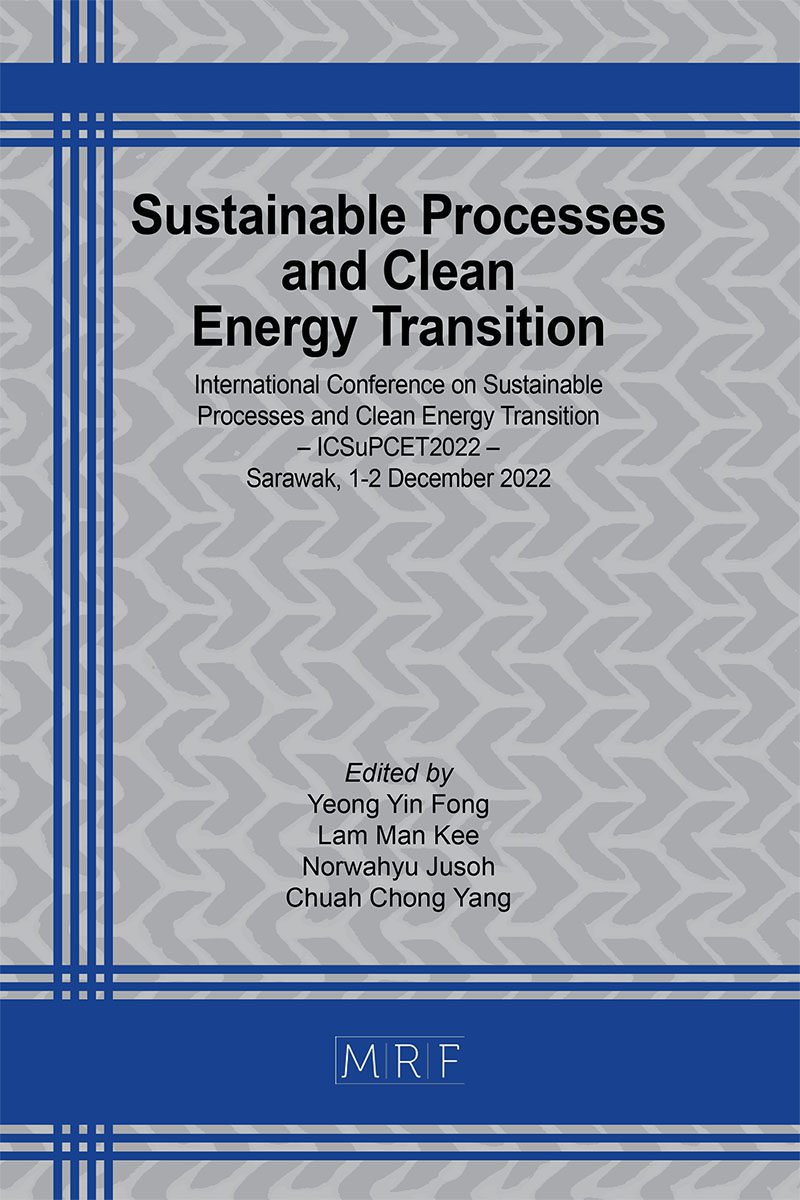Physicochemical characterization of recovered palm oil from palm oil mill effluent by progressive freezing
AMRAN Nurul Aini, MOHAMED ANUAR Muhammad Athir, RUSLAN Muhammad Syafiq
download PDFAbstract. Oil extraction rate (OER) is essential in measuring palm oil mills’ performance and competence. One of the attempts to achieving high OER is exploring the possibility of recovering residual oil from palm oil mill effluent (POME). A recent technique called progressive freezing (PF) has been proposed to reclaim the residual oil from POME, forming a block of solid oil in the system. This article focuses on evaluating the quality of the recovered oil through its physicochemical characterization (free fatty acid (FFA), deterioration of bleachability (DOBI), moisture content and dirt analysis) before deciding on the subsequent usage or suitable treatment if needed. The results show that the residual oil contained 25 to 27% free fatty acid (FFA), 1.01 to 2.02% moisture content, 0.049 to 0.055 dirt and had deterioration of bleachability (DOBI) between 2.3 to 2.7. The recovered oil had been proposed to be suitable for recycle or utilization as a value-added product such as biodiesel production.
Keywords
Progressive Freezing, Recovered Palm Oil, Palm Oil Mill Effluent, Free Fatty Acid, DOBI
Published online 5/20/2023, 7 pages
Copyright © 2023 by the author(s)
Published under license by Materials Research Forum LLC., Millersville PA, USA
Citation: AMRAN Nurul Aini, MOHAMED ANUAR Muhammad Athir, RUSLAN Muhammad Syafiq, Physicochemical characterization of recovered palm oil from palm oil mill effluent by progressive freezing, Materials Research Proceedings, Vol. 29, pp 355-361, 2023
DOI: https://doi.org/10.21741/9781644902516-40
The article was published as article 40 of the book Sustainable Processes and Clean Energy Transition
![]() Content from this work may be used under the terms of the Creative Commons Attribution 3.0 license. Any further distribution of this work must maintain attribution to the author(s) and the title of the work, journal citation and DOI.
Content from this work may be used under the terms of the Creative Commons Attribution 3.0 license. Any further distribution of this work must maintain attribution to the author(s) and the title of the work, journal citation and DOI.
References
[1] H. Purnomo et al., Reconciling oil palm economic development and environmental conservation in Indonesia: A value chain dynamic approach, For. Policy Econ. 111 (2020). 102089. https://doi.org/10.1016/j.forpol.2020.102089
[2] I. Mukherjee, B. K. Sovacool, Palm oil-based biofuels and sustainability in southeast Asia: A review of Indonesia, Malaysia, and Thailand, Renew. Sust. Energ. Rev. 37 (2014) 1-12. https://doi.org/10.1016/j.rser.2014.05.001
[3] S. Kadandale, R. Marten, and R. Smith, The palm oil industry and non-communicable diseases, Bull. World Health Organ. 97 (2019) 118-128. https://doi.org/10.2471/BLT.18.220434
[4] W. Willett et al., Food in the Anthropocene: the EAT-Lancet Commission on healthy diets from sustainable food systems, The Lancet, 393 (2019) 447-492. https://doi.org/10.1016/S0140-6736(18)31788-4
[5] T. Silalertruksa et al., Environmental sustainability of oil palm cultivation in different regions of Thailand: Greenhouse gases and water use impact, J Clean. Prod. 167 (2017) 1009-1019. https://doi.org/10.1016/j.jclepro.2016.11.069
[6] P. Maneechakr and S. Karnjanakom, A combination of 2k factorial with Box-Behnken designs for FAME production via methanolysis of waste cooking palm oil over low-cost catalyst, J. Environ. Chem. Eng. 7 (2019) 103389. https://doi.org/10.1016/j.jece.2019.103389
[7] P. Alagi et al., Carbon Dioxide-Based Polyols as Sustainable Feedstock of Thermoplastic Polyurethane for Corrosion-Resistant Metal Coating, ACS Sustainable Chem. Eng. 5, (2017) 3871-3881. https://doi.org/10.1021/acssuschemeng.6b03046
[8] A. I. Matinja, N. A. Mohd Zain, M. S. Suhaimi, A. J. Alhassan, Optimization of biodiesel production from palm oil mill effluent using lipase immobilized in PVA-alginate-sulfate beads, Renew. Energy 135 (2019 1178-1185. https://doi.org/10.1016/j.renene.2018.12.079
[9] H.-M. Yoo, S.-W. Park, Y.-C. Seo, K.-H. Kim, Applicability assessment of empty fruit bunches from palm oil mills for use as bio-solid refuse fuels, J. Environ. Manage. 234 (2019) 1-7. https://doi.org/10.1016/j.jenvman.2018.11.035
[10] M. S. Umar, P. Jennings, T. Urmee, Sustainable electricity generation from oil palm biomass wastes in Malaysia: An industry survey, Energy 67 (2014) 496-505. https://doi.org/10.1016/j.energy.2014.01.067
[11] C. Hing Chung et al., Recovery of residual oil from palm oil mill effluent using polypropylene nanofiber: a field trial,” MIJST 3 (2017) 276-294. https://doi.org/10.20319/mijst.2017.32.276294
[12] A. P. Ghulam Kadir, Oil palm economic performance in malaysia and R&D progress in 2019, JOPR, 2020. https://doi.org/10.21894/jopr.2020.0032
[13] A. Ahmad, Effect of Ozonation on Biodegradation and Methanogenesis of Palm Oil Mill Effluent Treatment for the Production of Biogas, Ozone: Sci. Eng. 41 (2019) 427-436. https://doi.org/10.1080/01919512.2019.1565987
[14] F. B. Ahmad, Z. Zhang, W. O. S. Doherty, and I. M. O’Hara, The prospect of microbial oil production and applications from oil palm biomass, Biochem. Eng. J. 143 (2019) 9-23. https://doi.org/10.1016/j.bej.2018.12.003































